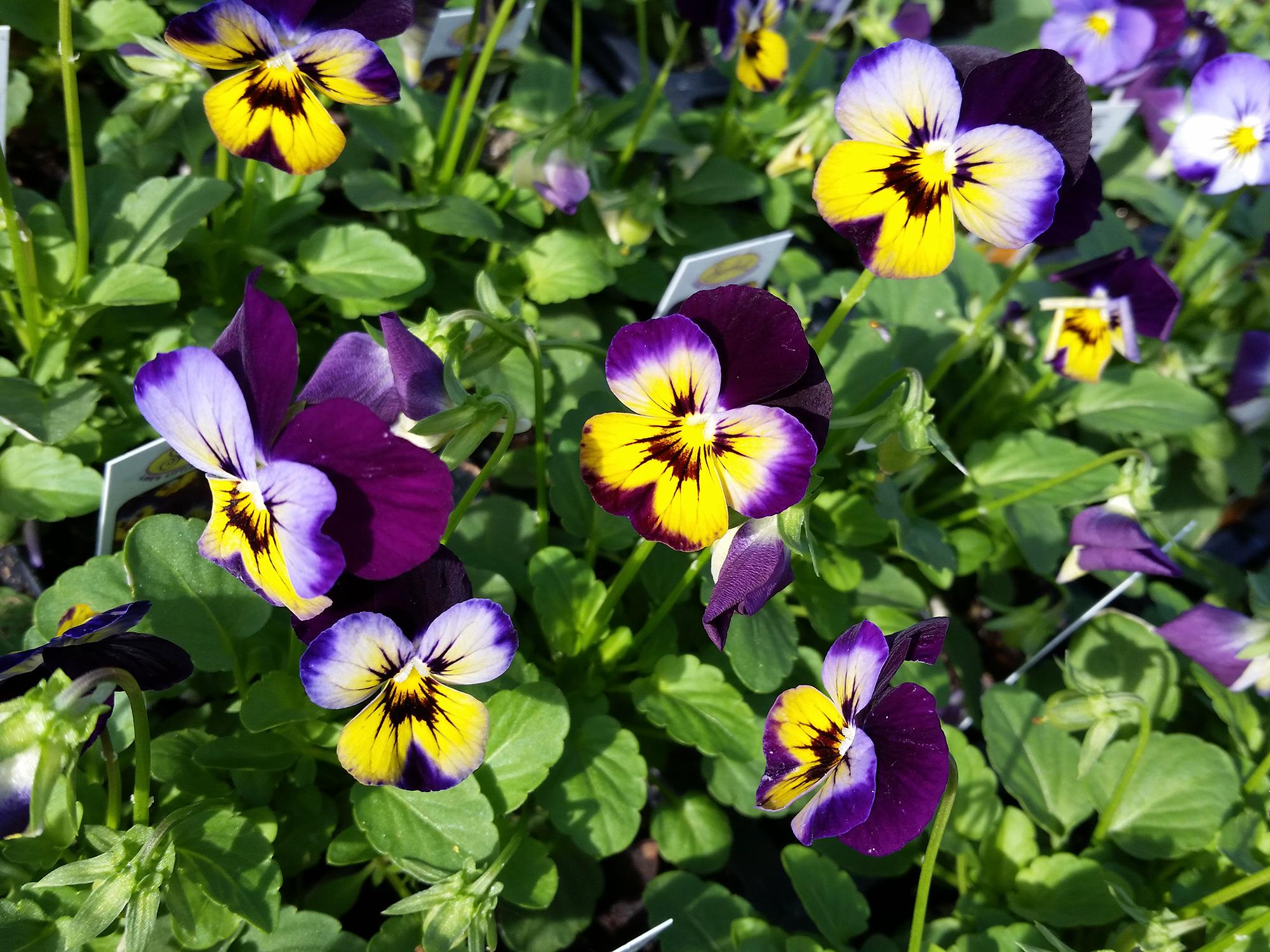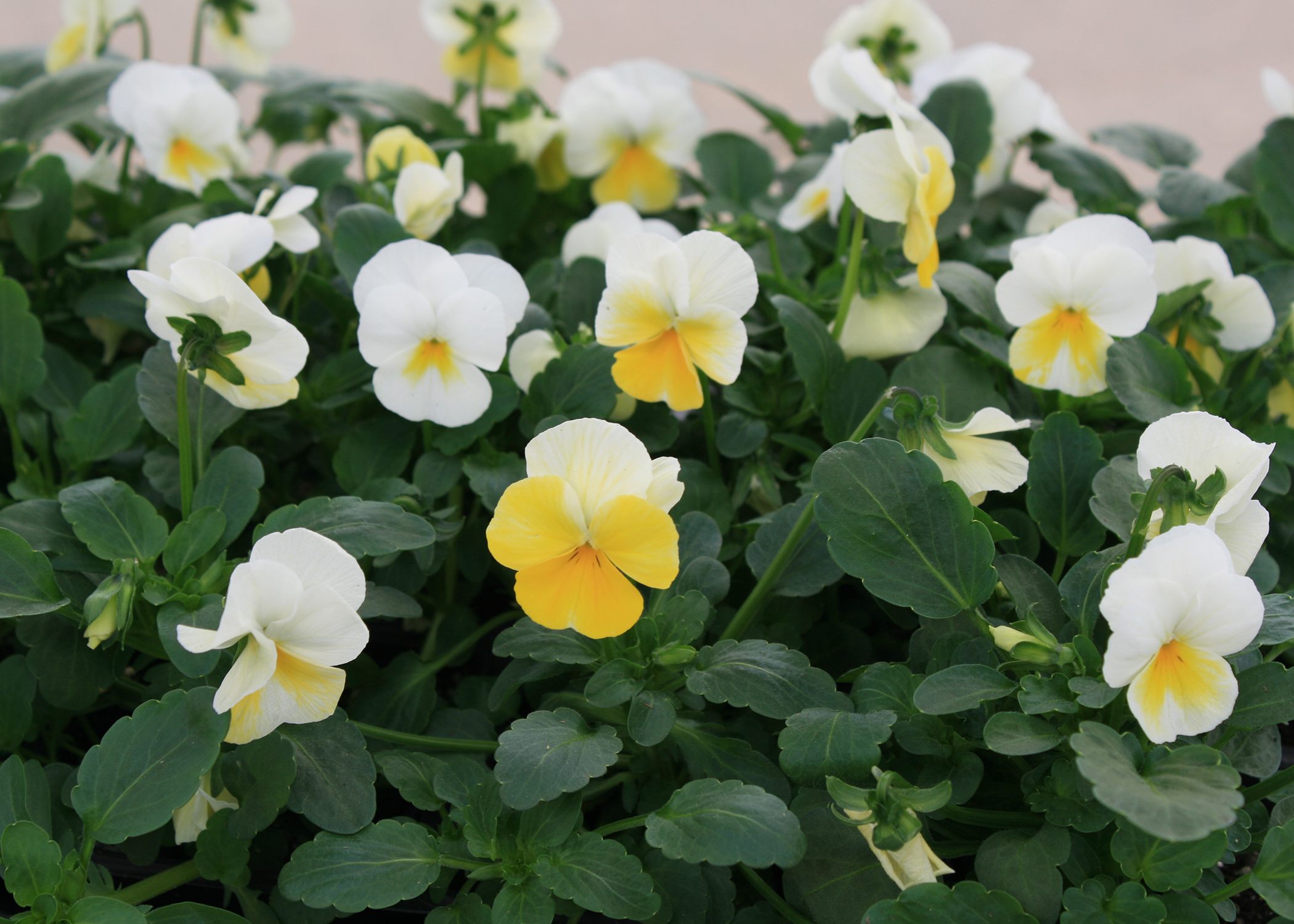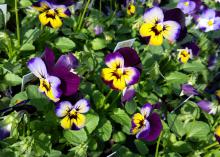Information Possibly Outdated
The information presented on this page was originally released on October 17, 2016. It may not be outdated, but please search our site for more current information. If you plan to quote or reference this information in a publication, please check with the Extension specialist or author before proceeding.
Plant violas in the fall for winter-long color
An important step in keeping year-round color in the garden and landscape is planting and transitioning the annual color plants.
Within the last month, I’ve planted my favorite fall French marigolds, also called Mari-mums. My Telstar dianthuses and snapdragons are also in and starting to show off. At the beginning of September, I pulled my Blue Daze evolvuluses from the front walk bed and replaced them with some beautiful, tight-budded mini chrysanthemums.
These chrysanthemums were gorgeous for about six weeks, but I noticed this past weekend that the flowers are fading fast. They did their job of bridging the gap between the heat of late summer and the beginning of cooler weather we’re now enjoying. But it’s time to move on; Mother Nature waits for no one.
So yesterday I pulled up the mums and replaced them with violas, another favorite cool-season bedding plant. These plants are closely related to the Matrix pansies I planted a couple of weeks ago.
Violas are tough and tolerant of cold, winter weather, maybe even more so than pansies. They perform well in landscape beds as well as containers. They grow right through Thanksgiving and will still be shining in the garden at Easter and beyond.
Violas are also called “Johnny jump ups” due their prolific seed production. It seems wherever I have planted them in my yard, they continue to reappear in various spots around the landscape for a least a couple of years more.
Now is the time is start buying the violas you’ll need this winter, as the selection now is really good with lots of variety available. If you wait, you may not find the colors you want. In other words, if you snooze, you lose.
I’ve really become a fan of the Sorbet series of violas.
These plants are about 4 to 6 inches tall and wide, and when mass planted, they seem to cover the landscape or container with a floral blanket. Sorbet violas resist stretching and stay compact through the season, even as the temperatures start to rise in the spring. Their best aspect is the color, as selections seem absolutely endless. These colorful flowers are displayed above the foliage to really showoff.
All violas need to grow is consistently moist soil. Moisture is especially important to monitor in containers. If the roots get a little dry, the flower production will turn off, which is not a good thing.
Be sure to plant yours in full sun before the really cold weather sets in. This timing allows the root system to get established, and the gardener will be rewarded now and next spring with great color. That’s why I recommend you start planting now.
Violas need a consistent source of nutrients to keep the flowering at its best. I always put a couple of teaspoons of controlled-release fertilizer in the planting hole and apply water-soluble fertilizer every three weeks during normal watering.
When you go to buy your violas, you’ll see them at garden centers in packs and in 3- or 4-inch pots. Which should you choose? The pack plants are a little cheaper per plant and will have more per flat, but these will take longer to fill in. The pot plants are bigger and a little more expensive, but you’ll get more instant effect. I like to use the bigger plants.
I have one last piece of advice about planting violas. There is nothing lonelier than a viola planted by itself in a big flower bed. For the best landscape performance and display, always plant violas in big masses.
So get on out to the garden centers while the selection is at its best and start planting some cool-season color to enjoy.
Editor's note: Dr. Gary Bachman is an Extension and research professor of horticulture at the Mississippi State University Coastal Research and Extension Center in Biloxi. He is also the host of the popular Southern Gardening television and radio programs.






